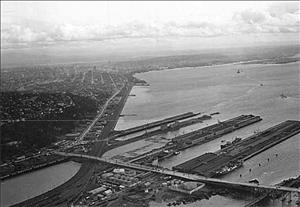- Reaction score
- 11,895
- Points
- 1,160
True that. Stalin had lots of Tatar and Kazakh bullet traps available.Manpower is definitely a big part too. What other army could have taken the losses the Soviets did and still continue to fight?

True that. Stalin had lots of Tatar and Kazakh bullet traps available.Manpower is definitely a big part too. What other army could have taken the losses the Soviets did and still continue to fight?
And as a Georgian, he was more than willing to fight to the last Tartar and Kazakh.True that. Stalin had lots of Tatar and Kazakh bullet traps available.
I still stipulate that the Germans were beaten by the inability to secure their flanks. There is just too much space in Russia. Russia could always fall back over the Urals, as it did with its factories, and then envelop Germany's open flanks and encircle them. No matter what the Germans did space (and the weather - Generals Mud and Snow) always gave the Russians time.
And the cold wore down their people and the kit.
I'll agree that was the plan. But by the time he got to a line Archangel-Stalingrad (Arctic Ocean - Caspian Sea) his FLOT was at least three times longer than it was when he crossed his Polish Start line.Flank security was established by way of the Finns in the north and Romanians in the south both under the Fuehrer directive and the actual op plan.

Maybe for July of 1941, but after that, not so much.I think the aim and the plan were clear. The question is was it ever achievable or too ambitious in the first place?
Absolutely. My comment was only so far as the original objective and plan which was clear and broadly stated so as to leave subordinate commands plenty of room to put flesh on the bones.Maybe for July of 1941, but after that, not so much.
The Germans initiated Barbarossa thinking they could achieve a decisive campaign in Belorussia . They didn't. They were also surprised with the ferocity with which Soviets fought back, even when encircled.
As July turned to August, there was strategic paralysis as the Army leadership, specifically Halder at OKH and Bock in AGC, wanted to push to Moscow and, on the way, destroy the main grouping of Soviet forces under the Western Front. Hitler was not convinced, but wouldn't provide an objective.
This lack of strategy resulted in aimless operations such as Guderian's seizure of the Yelnya salient, which became a magnet for Soviet counterattacks and had to be abandoned after a high rate of losses. The Army kept pushing for Moscow as the battle for Smolensk wound down, but Hitler would not commit.
Ultimately, Stahel contends, it was the signing of the Atlantic Charter between the US and UK that convinced Hitler that it would be a long war, and resources would be the key. He placed the strategic objective as Kiev and the Donbas with its resources, and over the protests of his Generals, stopped the advance on Moscow and sent PzrGp 2 south to encircle the Southwest Front at Kiev.
As one charts the battles of 1941, and the strategic discussion within Germany, one can see that the aim and the plan were really expedients after the expected Soviet collapse did not occur in July/August.
Likely the latter, due to a gross miscalculation in intelligence on the strength of the Red Army and its capacity to regenerate. The literature indicates that the Germans essentially situated their estimate of the Red Army to fit into their objective of a 6 week campaign after which the Soviet Union would collapse.Was the original objective and plan feasible in the first place or doomed to failure? If it was feasible then the question becomes why did it fail? If it wasn't feasible then that becomes a moot point and we simply debate what points of failure were inevitable and which ones were due to mistakes made after crossing the start line.

Geography, too. The Eastern Front was on a completely different level to the campaign in the west. The French conveniently located much of their population and industry in readily accessible areas -- Paris was about 400km from the German border. East Prussia to Moscow was 1200km, and there's a lot more Soviet Union located to the east of Moscow.Well considering the Western forces did pretty much that, the assumption is not without merit. They just didn't count on the Iron will and fear of Stalin.

